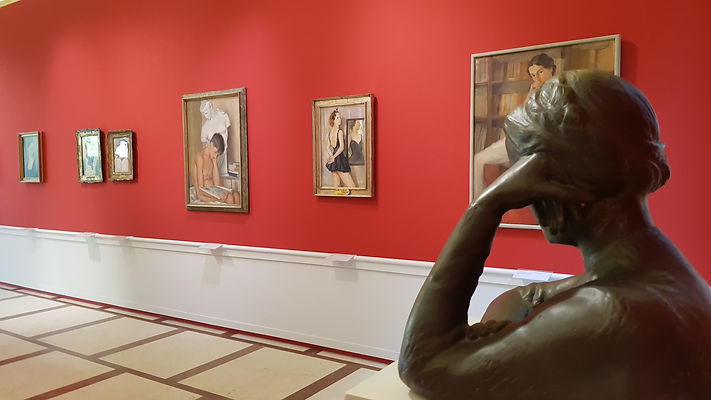

ARTISTE
Women Artists in Florence: 1900-1950
September 22 – November 18, 2018
Fondazione CR Firenze, Exhibition Hall
“Fillide Levasti Giorgi and Leonetta Cecchi Pieraccini are central figures in this show spotlighting art of the interwar period, in a Florence caught between European trends and the push for a return to traditional canons. The two aspiring artists had been friends since their time as students of Macchiaoli artist Giovanni Fattori, and they would later cultivate friendships with other notable women producing art locally or those who were fellow members of the women’s organisations prevalent in their day,” writes Umberto Tombari, President of the Fondazione CR Firenze, the show’s co-organiser and host.
“Fillide Levasti worked towards primitivism imbued with subtle caricature-like flair. A form of lyrical caricature typifies her urban views, populated by figures who wander amidst the cube-like geometry of her buildings and archaic landscapes,” writes co-curator Lucia Mannini. “Her curious gaze explored teeming everyday activities, giving life to what has become a zestful and enchanting repertoire of a lost Florence.” As for Leonetta Pieraccini Cecchi, “Portraiture was the genre that best brought out her talents, says co-curator Chiara Toti, "especially when coupled with neo-sixteenth-century flair.”
In her essay, “This doesn’t look like it was done by a woman,” published in the exhibition catalogue, Mannini spotlights several of the works by the other artists on show: “The physical exhilaration of maternity was one of Marisa Mori’s most emblematic works. Its violets and reds are as intense as the feeling she seeks to convey using circles and spirals that perhaps derive from the vertiginous feeling of spinning through the air.
Elisabeth Chaplin abandoned the flamboyant chromatic spectrum rooted in the post-Impressionist culture which had been long cultivated in Florence by the most experienced artists and collectors of her time, and distanced herself from light techniques in order to heighten the symbolist feel of her figures. The girl with the cloak is a supreme example. Sculptor Evelyn Scarampi produced essential works in terracotta, bronze, marble or stone which have an archaic feel, even when the subjects rendered abandon any sense of asceticism and become more worldly, as with Girl with a hat, from 1935. The austerity of Elena Salvaneschi's painted forms vibrates, in crinkles of color, applied with wide brushstrokes. Her work, opaque as a fresco, undulates inside controlled colorist fabric. Its forms indulge vigilant observers of psychology. Her granite-like Figure in white, stands exposed in a pathetic self-embrace; the figure grips her convent-style dress with large hand
Exhibition curators: Lucia Mannini and Chiara Toti
Project sponsors: Fondazione CR Firenze and Advancing Women Artists
In collaboration with Il Palmerino Cultural Association, Gabinetto G. P. Vieusseux, with the patronage of the Consulate of the United States of America in Florence























